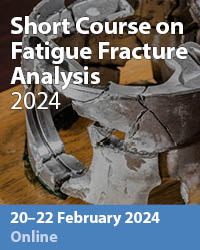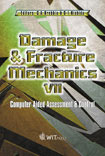Computational Fracture Analysis Of SEN-specimens Under Out-of-plane Shear Loading Conditions Regarding 3D And Mode Coupling Effects
Price
Free (open access)
Transaction
Volume
37
Pages
Published
2002
Size
616 kb
Paper DOI
10.2495/DM020021
Copyright
WIT Press
Author(s)
F-G Buchholz, A Chergui & H A Richard
Abstract
Computational fracture analysis of SEN-speci- mens under out-of-plane shear loading condi- tions regarding 3D and mode coupling effects F.-G. Buchholz1, A. Chergui2, H. A. Richard1 1Institute of Applied Mechanics, University of Paderborn, Germany 2Lab. of Material and Joining Technology, Univ. of Paderborn, Germany Abstract In this paper detailed results of 3D finite element (FE) and mixed-mode analyses of single edge notched (SEN) specimens under out-of-plane shear loading are presented and discussed. Special interest is taken in 3D and mode coupling effects to be found in stress intensity factor (SIF) or strain energy release rate (SERR) results along crack fronts, in particular adjacent to an intersection of a crack front with a free surface of the specimen. The SERR results are obtained by means of the modified virtual crack closure integral (MVCCI) method, which is very well suited for this type of problem and has proved to be numerically highly effective and accurate. 1 Introduction The understanding and analysis of mixed-mode fracture is an important subject in fracture mechanics because material flaws and pre-cracks, which may have been introduced unintentionally during the manufacturing process, can have an arbitrary orientation with respect to the loading applied to a component of a machine or structure. In this paper, detailed results of 3D finite element (FE) and mixed-mode analyses of single edge notched (SEN) specimens under out-of-plane shear loading are presented and discussed. Special interest is taken in 3D and mode coupling effects to be found in stress intensity factor (SIF) or strain energy release rate (SERR) results along crack fronts, in particular adjacent to an intersection of a crack front with a free surface of the specimen. It will be shown that by pure out-of-plane shear loading of the SEN-specimen generally also
Keywords





